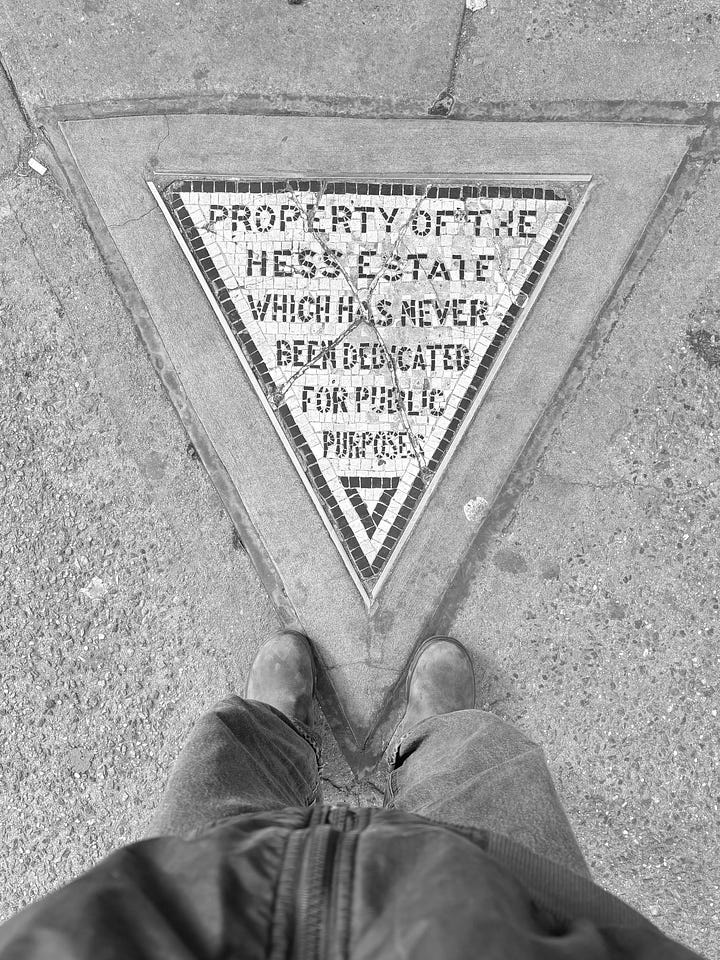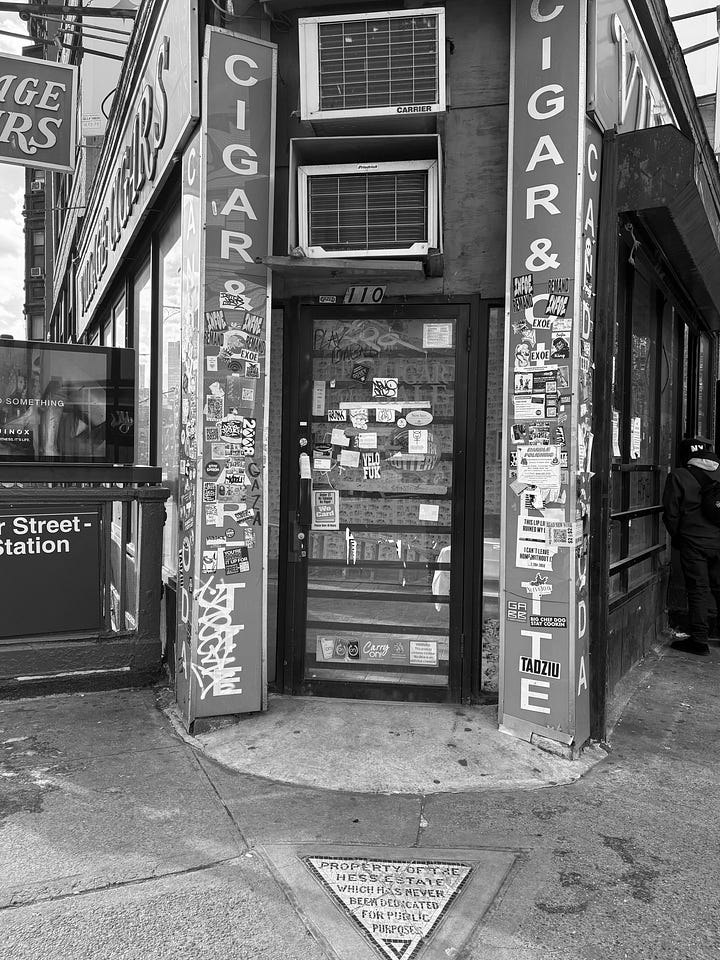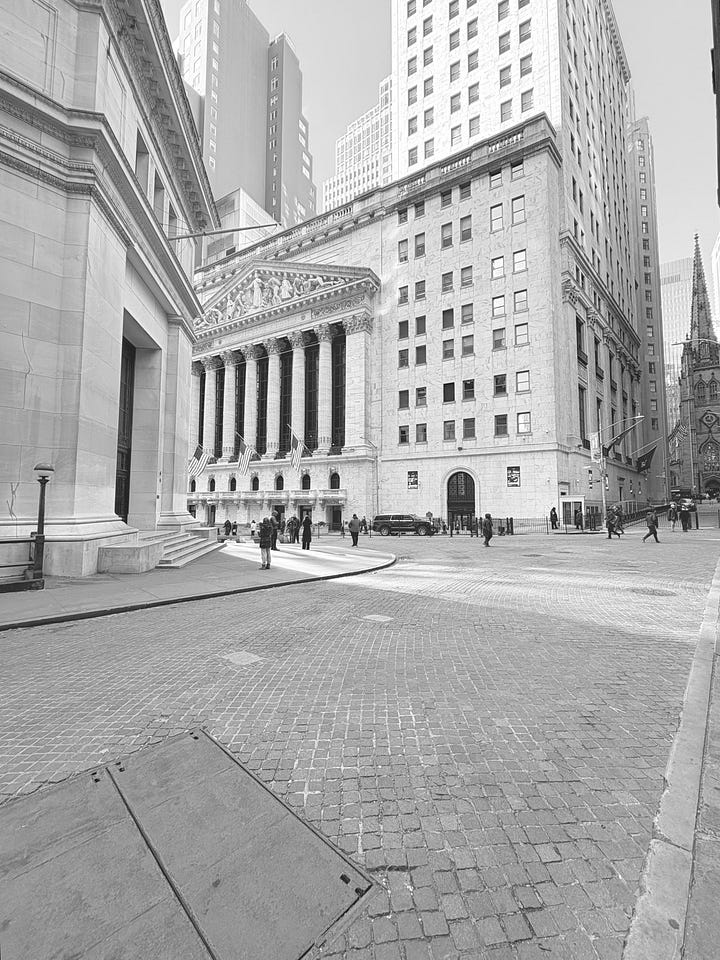Composing New York: Hidden History
Join author Sophie Brandimarte as she digs through New York City for secrets stored in unexpected places.
As of late I’ve found myself walking around the city with my neck craned upwards, completely in awe, gazing at the historic architecture. It definitely makes me look like some wide-eyed tourist but I can’t help it. And I’m sure my friends are tired of me spewing out historical New York City trivia on our walk to the bodega. I guess I consider myself an amateur history buff, an enjoyer of a subject so extensive that a lot of folks are apprehensive to indulge. History sometimes has a reputation of tediousness, of being stale or boring. But people should know there are lots of easier, more enjoyable ways to appreciate history than reading lengthy nonfiction books. History can be found in the in-betweens. Rich stories are tucked away in the little corners of your life. Some part of you has to be curious (true curiosity may lead to bumping into scaffolding on the sidewalk because you're looking up at century old buildings) to find these peeks into history. If you lean into that part of yourself, you will stumble upon the indisputable fact that you are a part of something bigger.
Living in New York City, I can often feel the spirit of the past bouncing off of the hundred year old buildings and through the cobblestone streets. Turns out, I’m not far off. Throughout my time here, I’ve picked up rumors and whispers around the city, and what lies between the cracks. Whenever you find yourself in New York, I encourage you to look out for the storied gems that make up the essence of the city. I promise it’s worth it.
The Hess Triangle
A Greenwich Village staple. The ultimate symbol of New York City stubbornness. In 1914, the city launched a plan for a massive expansion of the 7th Avenue subway line which would connect midtown with all of lower Manhattan. This proposal, however, meant that many of the disorganized and oddly shaped land divisions that made up the Village had to be seized by the city. Property owners were rightfully upset, especially the Hess family, who owned an apartment building on the corner of 7th Avenue and Christopher Street. After receiving the surveyor’s blueprints, the Hess family noticed a tiny slice of sidewalk that had remained theirs. It was the surveyor’s mistake, and the city begged the Hess family to give up the tiny piece of land so it could be a part of the public sidewalk. In an act of adamant rebellion, the Hess family cemented a plaque covering the 24 ½ inch wide triangle-shaped piece of land that had been mistakenly left to the family, into the sidewalk. Andrew Berman, executive director of the Greenwich Village Society for Historical Preservation, calls it “a typical New York story of trying to maintain an individual identity in this enormous metropolis.” The black and white tiled plaque which sits just outside the iconic bright red storefront of Village Cigars reads “PROPERTY OF THE HESS ESTATE WHICH HAS NEVER BEEN DEDICATED FOR PUBLIC PURPOSES.”


Hangman’s Elm
A 135 foot elm tree sits at the northwest corner of Washington Square Park, kept company by hundreds of passersby everyday, the majority of whom are probably oblivious to the fact that it is the oldest tree in Manhattan. At over 300 years old, its beautiful sprawling branches and lush greenery in the springtime make it difficult to believe the sinister legend of the tree. Once a swampy marsh and later a military parade ground, the land that the park sits on today has lived many lives. In the late 1700’s, it was a city-operated burial ground for slaves and victims of yellow fever (an estimated 20,000 bodies lay beneath the park). Originally passed down by word of mouth (though nowadays you can read all about it on multiple internet pages about the tree), the legend has it that the enormous elm was used for public hangings of traitors of the American Revolution, hence the name. The Newgate State Prison once sat near the park on the corner of 10th Street and Christopher Street, adding to the narrative that prisoners were taken from that prison to the tree to be hung. However, there are no records of public hangings at the tree, so its legend is simply that: a legend. Whether nooses once hung from those branches will remain a mystery but I choose to believe. It makes the city’s quirkiest park a whole lot spookier.
23 Wall Street
At 12:01 p.m. on Thursday, September 16th, 1920, a bomb went off right outside the first ever J.P. Morgan bank headquarters at 23 Wall Street. Occurring at the busiest intersection in the financial district at the time, the blast immediately killed 30 people and hundreds more were seriously injured. The bomb was set off when a horse-drawn wagon carrying 100 pounds of dynamite and 500 pounds of cast iron weights pulled in front of the bank building and exploded, sending the weights into the air to shatter everything in their path. The victims were mostly young people working on Wall Street as messengers, clerks, stenographers, and brokers. One 17 year-old messenger boy named James Saul commandeered a parked car and drove dozens of injured civilians to the nearest hospital, saving several lives. The New York Stock Exchange, which is right across the street, suspended all trading because of the panic that hit Wall Street that day. The case of the Wall Street bombing is still unsolved, but historians believed it could’ve been the work of Galleanists, a group of working class Italian immigrants and anarchists who were involved in the ongoing labor movement. The location of the bombing also led many to believe it could've been radical anti-capitalist groups such as the Bolsheviks or even the Soviet Union itself. What makes this story one of my favorite pieces of New York lore is that if you go to 23 Wall Street today, you can still see chunks of the marble walls missing. After the bombing, the J.P. Morgan Co. refused to make repairs to the building in an act of defiance against the unknown perpetrators and to show the future what the company overcame in order to become one of the most successful financial firms in the world. A story of political unrest, heroism, and defiance, all hidden within a few dents in the stone of an old bank building on Wall Street.


External Sources:
“Hangman’s Elm—the Oldest Living Tree in Manhattan — City Beautiful Blog.” City Beautiful Blog, 22 Apr. 2021, citybeautifulblog.com/2021/04/22/hangmans-elm-the-oldest-living-tree-in-manhattan/.
Hershkowitz, Toby. “The Weird, Wild Origin Story of NYC’s Tiniest Piece of Private Property, 100 Years Later.” ABC7 Los Angeles, 28 July 2022, abc7.com/hess-triangle-greenwich-village-nyc-history-walking-tours/12077625/.
Holmes, Tao Tao. “The Hangman’s Elm.” Atlas Obscura, 20 May 2016, www.atlasobscura.com/places/the-hangmans-elm-new-york-new-york.
Wikipedia Contributors. “Wall Street Bombing.” Wikipedia, Wikimedia Foundation, 19 Sept. 2019, en.wikipedia.org/wiki/Wall_Street_bombing.




